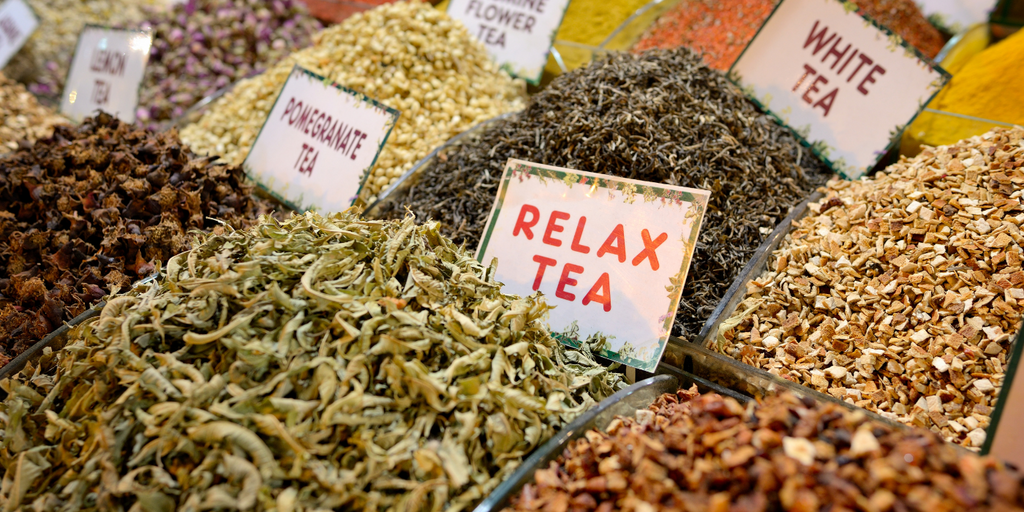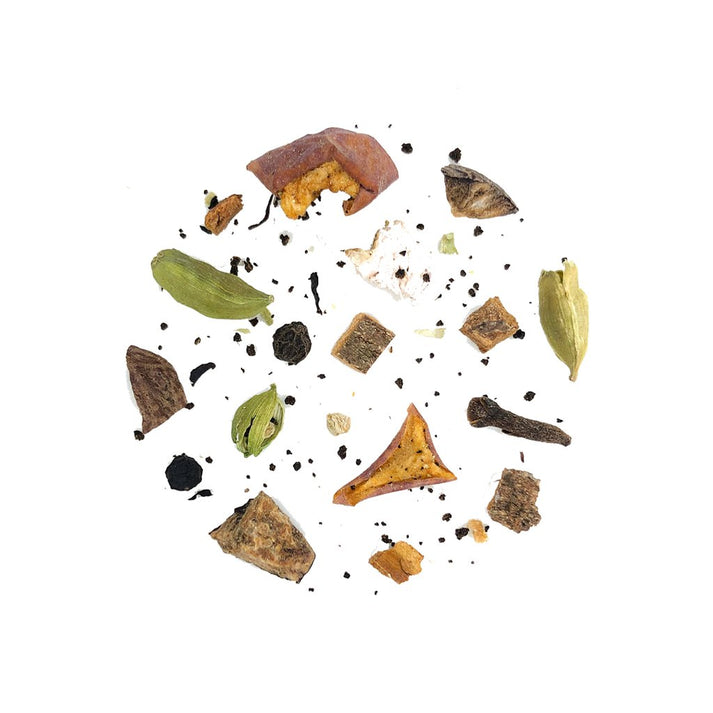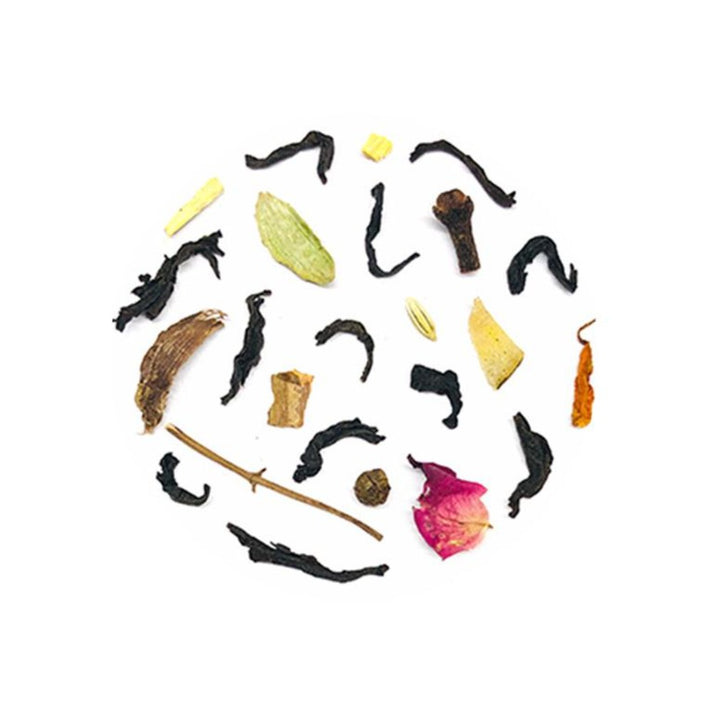The Ultimate Guide to Herbal Tea Benefits: Transform Your Wellness Journey

In a world where ancient wisdom meets modern wellness needs, herbal teas stand as timeless bridges between traditional healing practices and contemporary self-care. For thousands of years, cultures across the globe have turned to the gentle power of herbs steeped in hot water, finding both comfort and healing in every cup. Today, as we navigate the complexities of modern life, these time-honoured brews are experiencing a remarkable renaissance.
The global surge in wellness tea consumption isn't just a trend – it's a reflection of our collective return to natural, holistic approaches to health. Recent studies show that the wellness tea market has grown by 60% in the past five years, with more people than ever seeking natural solutions to support their physical and mental well-being. This rise reflects a deeper understanding of how traditional remedies can complement our modern lifestyle needs.
At TeaAo, we understand that true wellness goes beyond just drinking tea – it's about creating moments of mindful connection with yourself and the world around you. Our commitment to wellness and sustainability isn't just a promise; it's woven into every aspect of our operation. From our partnerships with small-scale organic farmers to our eco-conscious packaging, each decision is made with both your health and our planet's well-being in mind.
In this comprehensive guide, you'll discover:
- The science-backed benefits of various herbal teas and how they can support your wellness journey
- How to choose the right herbal teas for your specific health goals
- Traditional wisdom and modern research that support the healing properties of herbs
- Practical tips for incorporating herbal teas into your daily wellness routine
- The importance of sustainable and ethical tea sourcing in preserving both human and environmental health
Understanding Herbal Teas: A Foundation for Wellness
What Defines an Herbal Tea?
Contrary to common belief, herbal teas aren't technically "teas" in the traditional sense. True tea comes exclusively from the Camellia sinensis plant, which gives us black, green, white, and oolong varieties. Herbal teas, or "tisanes" as they're traditionally known, are infusions made from dried flowers, leaves, roots, or seeds of other plants. Each herb brings its own unique composition of beneficial compounds, from antioxidants to essential oils, creating a vast spectrum of wellness possibilities.
Historical Significance Across Cultures
The story of herbal tea is as old as civilization itself. In ancient Egypt, chamomile was revered as a gift from the sun god Ra. Chinese Traditional Medicine has used herbs like ginger and chrysanthemum for thousands of years to maintain balance and health. Native American traditions embrace herbs like elderberry and echinacea for immune support, while European monasteries preserved herbal wisdom through their carefully tended medicinal gardens.
Different Types of Herbal Teas
The world of herbal teas is remarkably diverse, offering something for every wellness need:
Flowering Herbs: Chamomile, lavender, and hibiscus offer gentle support for relaxation and stress relief
Leafy Herbs: Peppermint, holy basil (tulsi), and lemon balm provide digestive support and mental clarity
Roots and Rhizomes: Ginger, turmeric, and licorice root offer powerful anti-inflammatory and immune-supporting properties
Spices: Cinnamon, cardamom, and clove bring warming properties and metabolic support
Fruit and Berry Blends: Rose hip, elderberry, and apple bring natural sweetness along with vitamin C and antioxidants
The Science Behind Herbal Tea Benefits
Modern research continues to validate what traditional wisdom has long known. Herbal teas work through multiple mechanisms to support wellness:
Bioactive Compounds: Each herb contains unique phytochemicals that interact with our body systems. For example, chamomile contains apigenin, a compound that binds to specific receptors in the brain, promoting relaxation.
Antioxidant Activity: Many herbs are rich in polyphenols and flavonoids, which help combat oxidative stress and support cellular health.
Synergistic Effects: When herbs are combined thoughtfully, their beneficial properties can complement and enhance each other, creating more powerful wellness support.
What makes herbal teas particularly remarkable is their gentle yet effective nature. Unlike many modern interventions, herbal teas work with your body's natural processes, supporting balance and wellness from within. As you explore the world of herbal teas, you'll discover that each variety offers its own unique path to wellness, allowing you to create a personalized approach to natural health support.
Remember, while herbal teas offer wonderful wellness benefits, they're part of a holistic approach to health that includes proper nutrition, regular exercise, adequate sleep, and stress management. What specific wellness goals are you hoping to address with herbal teas?
Top 10 Health-Boosting Herbal Teas: Nature's Path to Wellness
In our journey through the world of wellness teas, certain herbs stand out for their remarkable healing properties. At TeaAo, we've carefully selected and sourced these powerful botanicals, ensuring you receive their full therapeutic benefits in every cup.
1. Chamomile: Nature's Calming Touch
Known as the "sleep flower" in ancient European traditions, chamomile continues to be one of the most beloved herbal teas worldwide. This gentle yet powerful herb offers multiple benefits that support overall wellness:
Sleep and Relaxation Benefits
- Contains apigenin, a natural compound that binds to benzodiazepine receptors in the brain
- Studies show that regular chamomile consumption can improve sleep quality by up to 60%
- Helps reduce evening anxiety and promotes natural sleep onset
- Creates a calming effect without morning grogginess
Digestive Properties
- Soothes irritated digestive tissues
- Reduces bloating and gastrointestinal discomfort
- Supports healthy gut flora balance
- Can help reduce symptoms of acid reflux when consumed after meals
Anti-inflammatory Effects
- Rich in anti-inflammatory compounds like chamazulene
- May help reduce muscle tension and minor aches
- Supports skin health when consumed regularly
- Can help alleviate menstrual discomfort
2. Peppermint: Invigorating Clarity
Peppermint tea offers a refreshing boost to both body and mind, making it a perfect choice for those seeking natural energy and digestive support.
Digestive Aid Benefits
- Natural antispasmodic properties help relieve digestive discomfort
- Reduces bloating and supports healthy digestion
- Contains rosmarinic acid, which helps calm intestinal muscles
- Particularly effective when consumed after heavy meals
Mental Clarity and Focus
- The natural menthol aroma enhances mental alertness
- Studies show improved concentration during cognitive tasks
- Provides a caffeine-free energy boost
- Helps reduce mental fatigue during afternoon slumps
Respiratory Support
- Opens airways naturally through menthol compounds
- Helps clear nasal passages
- Supports healthy bronchial function
- Particularly soothing during seasonal changes
3. Ginger: Ancient Wisdom for Modern Wellness
This powerful root has been used in traditional medicine systems for thousands of years, offering robust support for multiple aspects of health.
Anti-nausea Properties
- Contains gingerols and shogaols that calm stomach discomfort
- Particularly effective for motion sickness and morning sickness
- Helps reduce nausea related to chemotherapy (when approved by healthcare providers)
- Works quickly, usually within 15-30 minutes of consumption
Immune System Support
- Rich in antioxidants that boost immune function
- Contains natural antimicrobial compounds
- Supports healthy inflammation response
- Particularly beneficial during seasonal changes
Anti-inflammatory Benefits
- Natural COX-2 inhibitor properties
- Supports joint health and mobility
- Helps reduce exercise-induced inflammation
- Can be combined with turmeric for enhanced benefits
TeaAo's Wellness Tip: For maximum benefits, we recommend trying our specially crafted blends that combine these powerful herbs. For instance, our "Evening Serenity" blend pairs chamomile with lavender and lemon balm, while our "Digestive Harmony" combines peppermint with ginger and fennel.
What's particularly fascinating about these herbal powerhouses is how they work in harmony with your body's natural rhythms. Whether you're seeking better sleep, improved digestion, or immune support, these teas offer gentle yet effective support for your wellness journey.
Remember to listen to your body as you explore these herbal allies. While they are generally safe for most people, it's always wise to start with a single cup to observe how your body responds, especially if you're new to herbal teas.
The Science of Wellness: How Herbal Teas Work
Understanding the science behind herbal teas helps us appreciate how these natural remedies support our well-being. At TeaAo, we believe in combining traditional wisdom with modern scientific understanding to provide you with the most effective wellness solutions.
 Active Compounds in Herbal Teas
Active Compounds in Herbal Teas
Each herbal tea contains unique bioactive compounds that contribute to its therapeutic effects:
Flavonoids
- Powerful antioxidants that combat oxidative stress
- Found abundantly in chamomile, rooibos, and hibiscus
- Help protect cells from environmental damage
- Support cardiovascular health
Essential Oils
- Volatile compounds responsible for aroma and many therapeutic effects
- Present in peppermint (menthol), lavender (linalool), and many other herbs
- Interact with our nervous system through both ingestion and aromatherapy
- Often responsible for digestive and calming benefits
Polyphenols
- Complex compounds with anti-inflammatory properties
- Particularly high in green tea and many herbal blends
- Support immune function and cellular health
- May help regulate blood sugar levels
Bioavailability and Absorption
The effectiveness of herbal teas depends largely on how well our bodies can access their beneficial compounds:
Extraction Methods
- Water temperature affects compound extraction
- Steeping time influences potency
- Some compounds are better extracted in hot water, others in cold
- TeaAo's brewing guidelines are optimized for maximum beneficial compound extraction
Enhancement Factors
- Adding a small amount of black pepper can increase absorption of certain compounds
- Combining with citrus can enhance antioxidant availability
- Fat-soluble compounds are better absorbed when taken with meals
- Proper hydration supports overall absorption
Synergistic Effects with Other Wellness Practices
Herbal teas work best as part of a holistic wellness routine:
- Meditation and mindful tea drinking enhance stress-reducing effects
- Exercise combined with adaptogenic herbs improves recovery
- Proper sleep hygiene plus calming teas optimizes rest
- Healthy diet alongside digestive teas maximizes gut health
Recent Scientific Studies and Findings
Modern research continues to validate traditional herbal wisdom:
- A 2024 study showed chamomile tea drinkers experienced 40% better sleep quality
- Recent research links regular herbal tea consumption to improved gut microbiome diversity
- Clinical trials demonstrate the effectiveness of ginger tea for reducing inflammation
- New studies highlight the potential neuroprotective effects of certain herbal compounds
Choosing the Right Herbal Tea for Your Wellness Goals
Morning Energy and Focus
Best Choices:
- Peppermint for natural alertness
- Ginseng for sustained energy
- Holy Basil for mental clarity
- Green tea blends for gentle caffeine boost
Optimal Timing: 30 minutes after waking, preferably before breakfast
Stress Relief and Relaxation
Best Choices:
- Lavender for immediate calming
- Chamomile for gentle relaxation
- Lemon Balm for anxiety reduction
- Passionflower for stress relief
Optimal Timing: Mid-afternoon or during stressful moments
Digestive Health
Best Choices:
- Ginger for nausea and digestion
- Peppermint for bloating
- Fennel for gut comfort
- Dandelion root for liver support
Optimal Timing: 15-30 minutes after meals
Immune Support
Best Choices:
- Elderberry for antiviral properties
- Echinacea for immune stimulation
- Rose hip for vitamin C
- Astragalus for long-term immunity
Optimal Timing: Throughout the day, especially during seasonal changes
Sleep Improvement
Best Choices:
- Chamomile for gentle sedation
- Valerian root for deeper sleep
- Magnolia bark for sleep quality
- California Poppy for natural rest
Optimal Timing: 30-60 minutes before bedtime
Weight Management Support
Best Choices:
- Green tea for metabolism
- Dandelion for natural detox
- Oolong for fat oxidation
- Rooibos for appetite regulation
Optimal Timing: Between meals or before exercise
TeaAo's Expert Tip: Listen to your body's response to different herbs and adjust your tea choices accordingly. While these recommendations serve as excellent starting points, your individual experience may vary. We recommend keeping a tea journal to track which blends work best for your unique needs.
Maximizing the Benefits: Brewing Methods and Tips
The art of brewing herbal tea is both a science and a ritual. At TeaAo, we believe that proper preparation is key to unlocking the full potential of each herb's beneficial properties.
 Optimal Brewing Temperatures
Optimal Brewing Temperatures
Different herbs require specific temperatures to release their optimal therapeutic compounds:
Delicate Herbs (160-170°F/71-77°C)
- Chamomile
- Mint leaves
- Lavender
- Rose petals
Medium-Robust Herbs (180-190°F/82-88°C)
- Holy Basil
- Lemon Balm
- Hibiscus
- Rooibos
Tough Roots and Barks (200-212°F/93-100°C)
- Ginger
- Turmeric
- Cinnamon
- Dandelion root
Steeping Times for Different Herbs
Light Infusions (3-5 minutes)
- Mint varieties
- Chamomile
- Lemon verbena
- Green tea blends
Medium Infusions (5-7 minutes)
- Hibiscus
- Rooibos
- Holy Basil
- Rose hip
Long Infusions (8-10+ minutes)
- Ginger root
- Turmeric
- Medicinal mushrooms
- Adaptogenic herbs
Water Quality Importance
The quality of your water significantly impacts the therapeutic benefits of your tea:
- Use filtered water to remove chlorine and heavy metals
- Avoid distilled water as it can create a flat taste
- Spring water offers optimal mineral content
- Never reuse already boiled water as it lacks oxygen content
Storage Best Practices
Proper storage preserves the potency of herbal teas:
- Store in airtight containers away from light
- Keep in a cool, dry place (ideal temperature 60-70°F/15-21°C)
- Avoid plastic containers; use glass or ceramic
- Label with purchase date and use within:
- Loose herbs: 6-12 months
- Tea bags: 8-12 months
- Roots and barks: up to 2 years
Seasonal Considerations
Adapt your tea choices to support seasonal wellness:
Spring
- Nettle for natural detoxification
- Dandelion for liver support
- Mint for energy renewal
Summer
- Hibiscus for cooling properties
- Lemon balm for heat stress
- Rose for heart opening
Autumn
- Elderberry for immune support
- Ginger for warming properties
- Astragalus for seasonal transition
Winter
- Cinnamon for warming circulation
- Echinacea for immune strength
- Holy basil for stress support
Creating Your Daily Herbal Tea Ritual
Transform your tea drinking into a mindful practice that nourishes both body and spirit.
Morning Routines
Rise and Shine Ritual (6:00-8:00 AM)
- Begin with warm water and lemon
- Choose an energizing blend (holy basil, mint, or ginger)
- Practice deep breathing while water heats
- Set intentions for the day while steeping
- Drink mindfully before breakfast
Afternoon Wellness Breaks
Mid-Day Reset (2:00-4:00 PM)
- Choose a balancing blend (rooibos, green tea, or hibiscus)
- Take a complete break from screens
- Find a quiet space
- Practice mindful steeping and sipping
- Use this time for gentle stretching or meditation
Evening Wind-Down Practices
Twilight Transition (7:00-9:00 PM)
- Select calming herbs (chamomile, lavender, or passionflower)
- Dim lights while preparing tea
- Practice gratitude while steeping
- Enjoy in silence or with soft music
- Include as part of your bedtime routine
Mindful Tea Drinking Practices
Transform each cup into a meditation:
The Five Senses Practice
- Sight: Observe the color and clarity
- Smell: Inhale the aroma deeply
- Touch: Feel the warmth of the cup
- Sound: Listen to the pouring
- Taste: Sip slowly and mindfully
Breathing Ritual
- Take three deep breaths before first sip
- Pause between sips
- Express gratitude for the healing properties
- Notice how your body feels as you drink
TeaAo's Mindfulness Tip: Create a dedicated tea space in your home with these elements:
- A comfortable cushion or chair
- Natural light if possible
- Your favorite tea implements
- A small plant or flower
- A journal for reflection
Remember, the ritual of preparing and drinking tea is as beneficial as the tea itself. How do you plan to incorporate these practices into your daily routine?
Sustainability and Wellness: The TeaAo Difference
At TeaAo, our commitment to wellness extends beyond the cup to embrace the entire ecosystem of tea production and consumption.
 Ethical Sourcing Practices
Ethical Sourcing Practices
Our dedication to ethical sourcing shapes every partnership we form:
- Direct relationships with small-scale farmers
- Fair trade practices ensuring living wages
- Long-term partnerships supporting sustainable agriculture
- Regular visits to our farming partners
- Traditional farming methods of preservation
Environmental Impact
We believe in leaving a positive footprint on our planet:
Sustainable Agriculture
- Organic farming practices
- Biodiversity preservation
- Water conservation techniques
- Natural pest management
- Soil health maintenance
Packaging Innovation
- 100% biodegradable tea bags
- Recyclable packaging materials
- Minimal plastic use
- Bulk options available
- Carbon-neutral shipping initiatives
Supporting Local Communities
Our success is intertwined with the prosperity of tea-growing communities:
- Educational programs for farmers' children
- Healthcare initiatives in farming communities
- Women's empowerment programs
- Technical training for sustainable farming
- Community development projects
Quality Assurance Processes
We maintain rigorous standards throughout our supply chain:
-
Harvesting Standards
- Optimal picking times
- Proper handling techniques
- Traditional processing methods
- Careful sorting and grading
-
Testing Protocols
- Third-party lab testing
- Pesticide screening
- Heavy metal analysis
- Microbial testing
- Potency verification
Common Questions and Expert Answers
Safety Considerations
General Safety Guidelines
- Start with small amounts of new teas
- Pay attention to your body's response
- Use reliable sources for your herbs
- Follow recommended brewing instructions
When to Exercise Caution
- Before surgery or medical procedures
- With certain health conditions
- When taking multiple herbs
- During significant diet changes
Interactions with Medications
Always consult healthcare providers about potential interactions:
Common Interactions to Watch
- Blood thinners with ginger or garlic
- Sedatives with chamomile or valerian
- Antidepressants with St. John's Wort
- Blood pressure medications with licorice
Pregnancy and Nursing Considerations
Safe options during pregnancy and nursing:
Generally Safe
- Ginger (morning sickness)
- Rooibos (caffeine-free)
- Peppermint (after first trimester)
- Red raspberry leaf (with provider approval)
Avoid During Pregnancy
- Hibiscus
- Sage
- Licorice root
- Certain adaptogenic herbs
Best Times for Consumption
Optimal timing for different benefits:
Morning
- Energizing blends
- Metabolism-boosting teas
- Immune support
Afternoon
- Digestive support
- Focus-enhancing blends
- Stress-relief teas
Evening
- Relaxation blends
- Sleep-supporting herbs
- Gentle digestive support
Combining Different Herbal Teas
Guidelines for creating effective combinations:
- Start with 2-3 herbs maximum
- Consider complementary properties
- Watch for overwhelming flavors
- Test combinations gradually
- Note synergistic effects
Conclusion
Summary of Key Benefits
The journey to wellness through herbal teas offers:
- Natural support for various health goals
- Sustainable wellness practices
- Connection to ancient healing traditions
- Daily moments of mindfulness
- Environmental consciousness
Your Wellness Journey Begins
Starting your herbal tea journey is simple:
- Choose teas aligned with your wellness goals
- Create a daily tea ritual
- Listen to your body's response
- Adjust and explore new blends
- Share your experience with our community
TeaAo's Commitment
We're here to support your wellness journey:
- Expert guidance and education
- Quality assurance
- Sustainable practices
- Community support
- Continuous innovation
Next Steps
Begin your exploration today:
- Visit our website to explore our collections
- Join our tea wellness community
- Subscribe to our newsletter for updates and tips
- Follow us on social media for daily inspiration
- Contact our tea experts for personalized guidance
Transform your daily routine into a journey of wellness with TeaAo. Every cup is an opportunity to nurture your body, mind, and spirit while supporting sustainable practices and communities worldwide.
Ready to begin your wellness journey? Explore our curated collection at website or visit our blog for more insights into the world of wellness teas.







